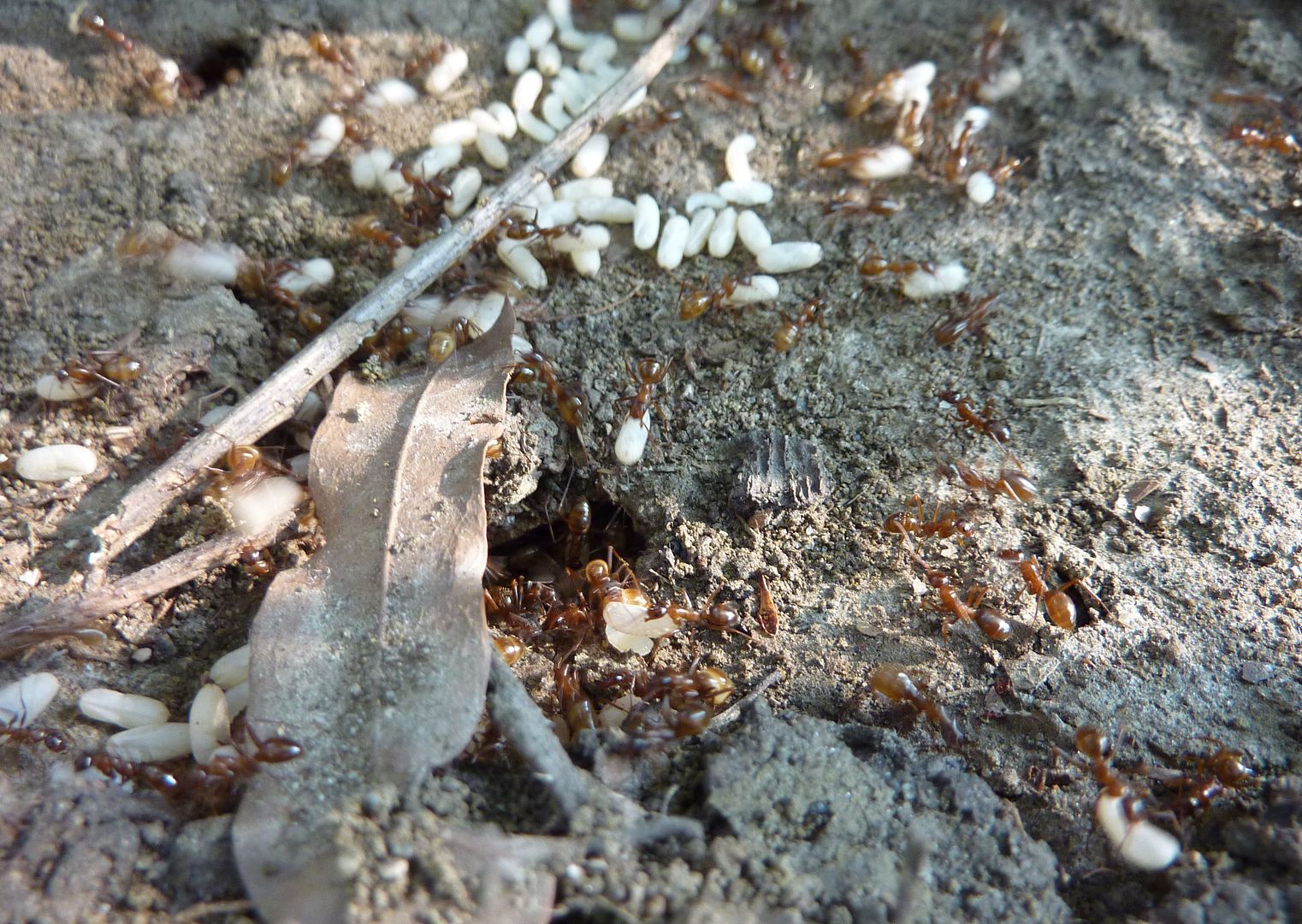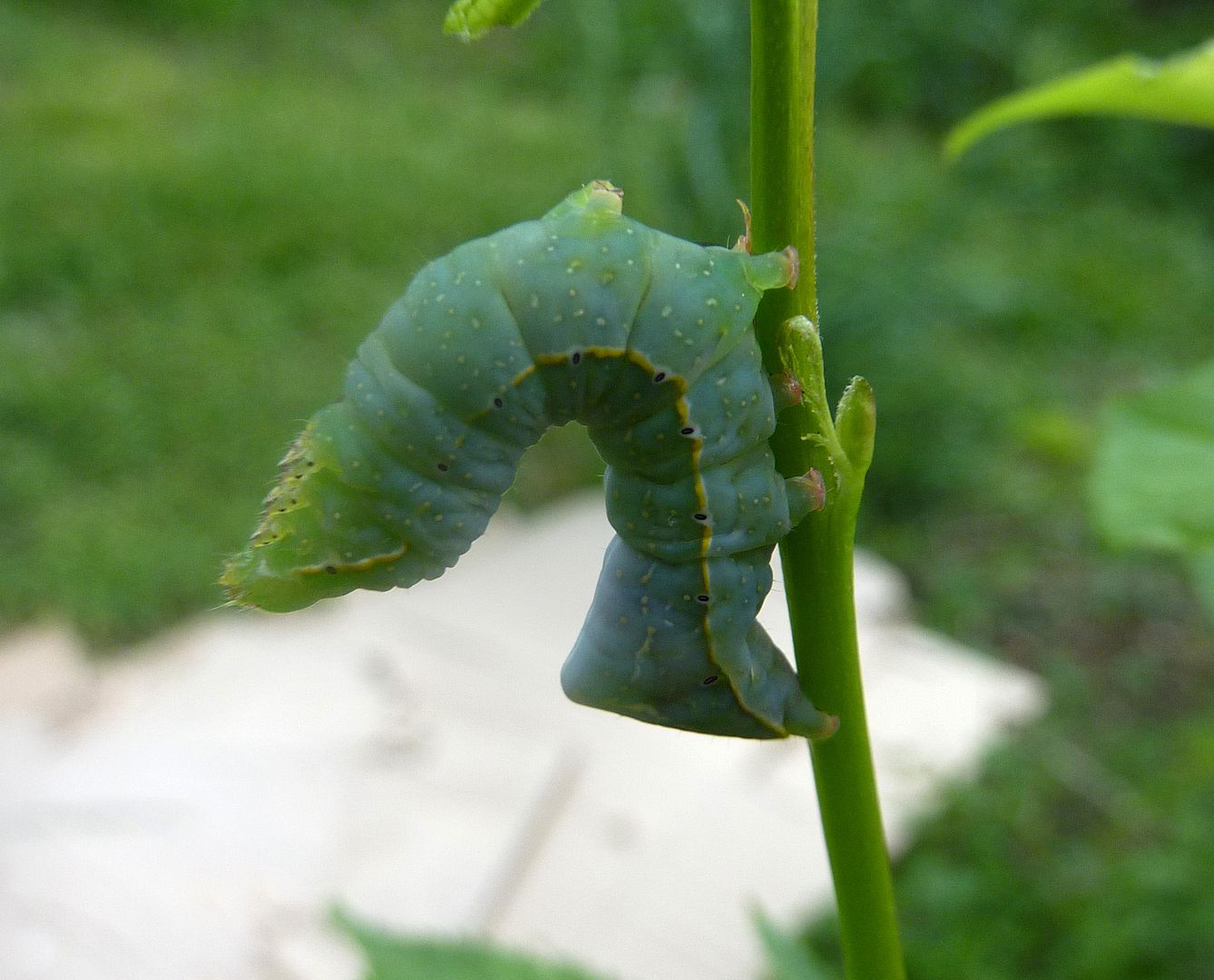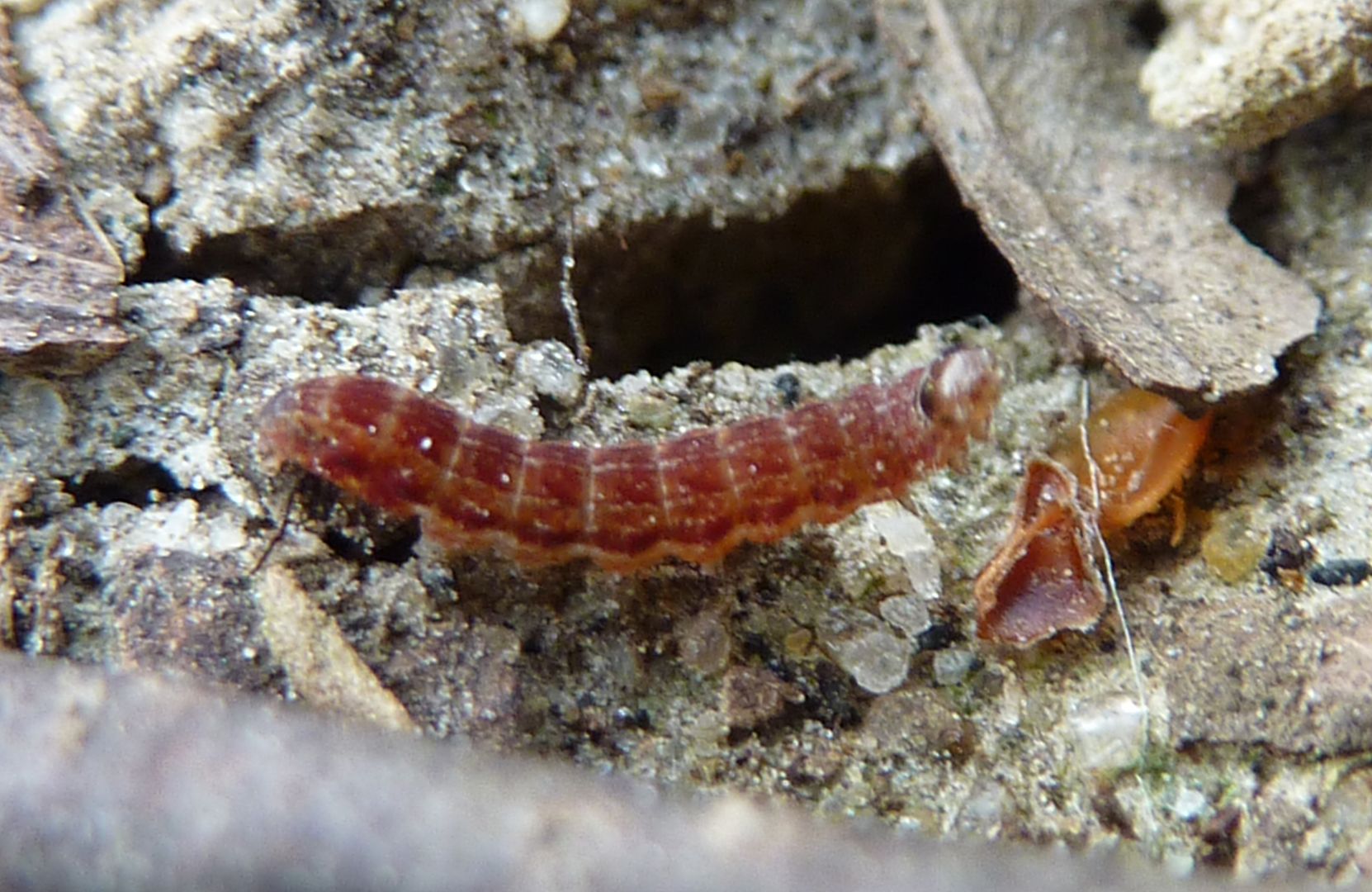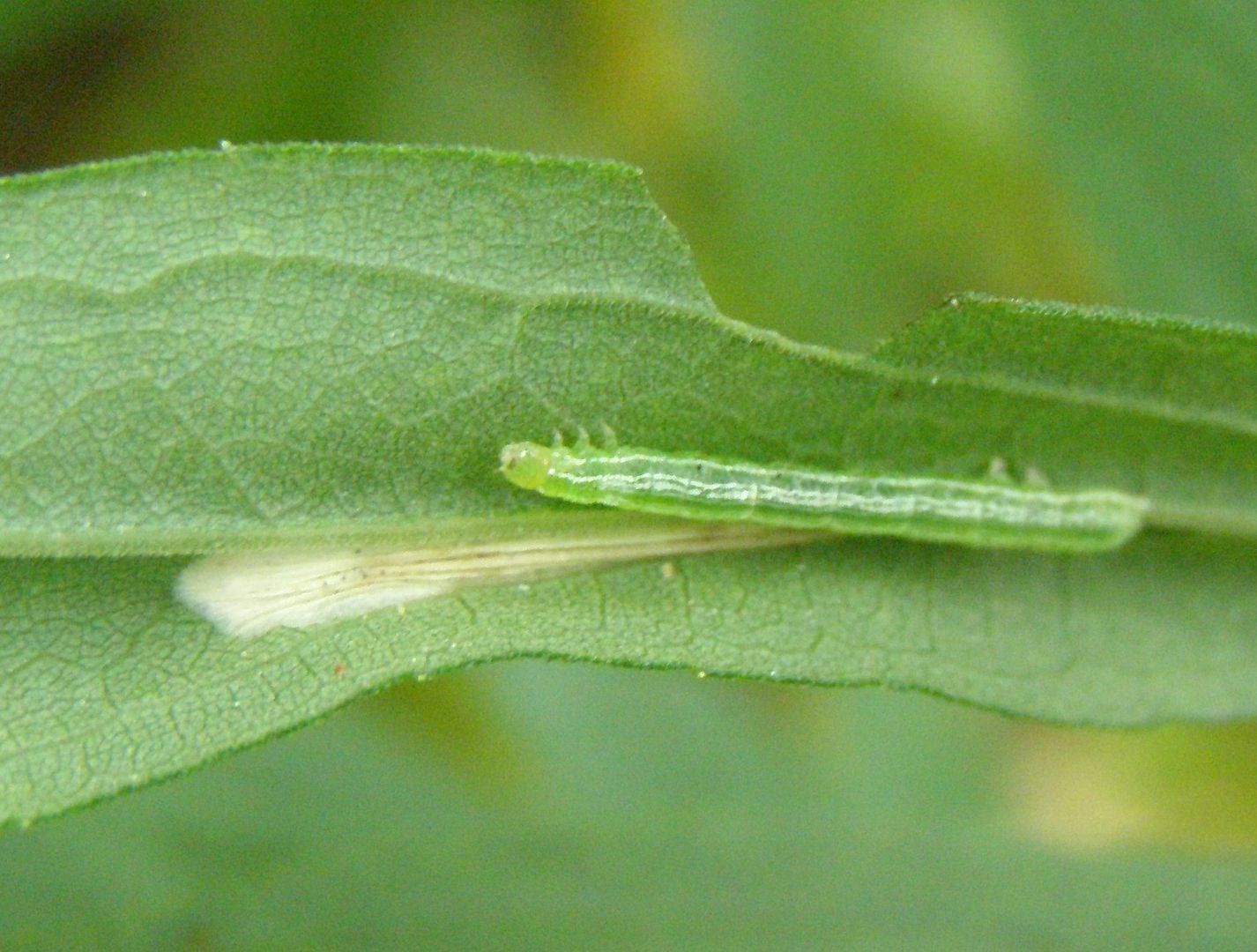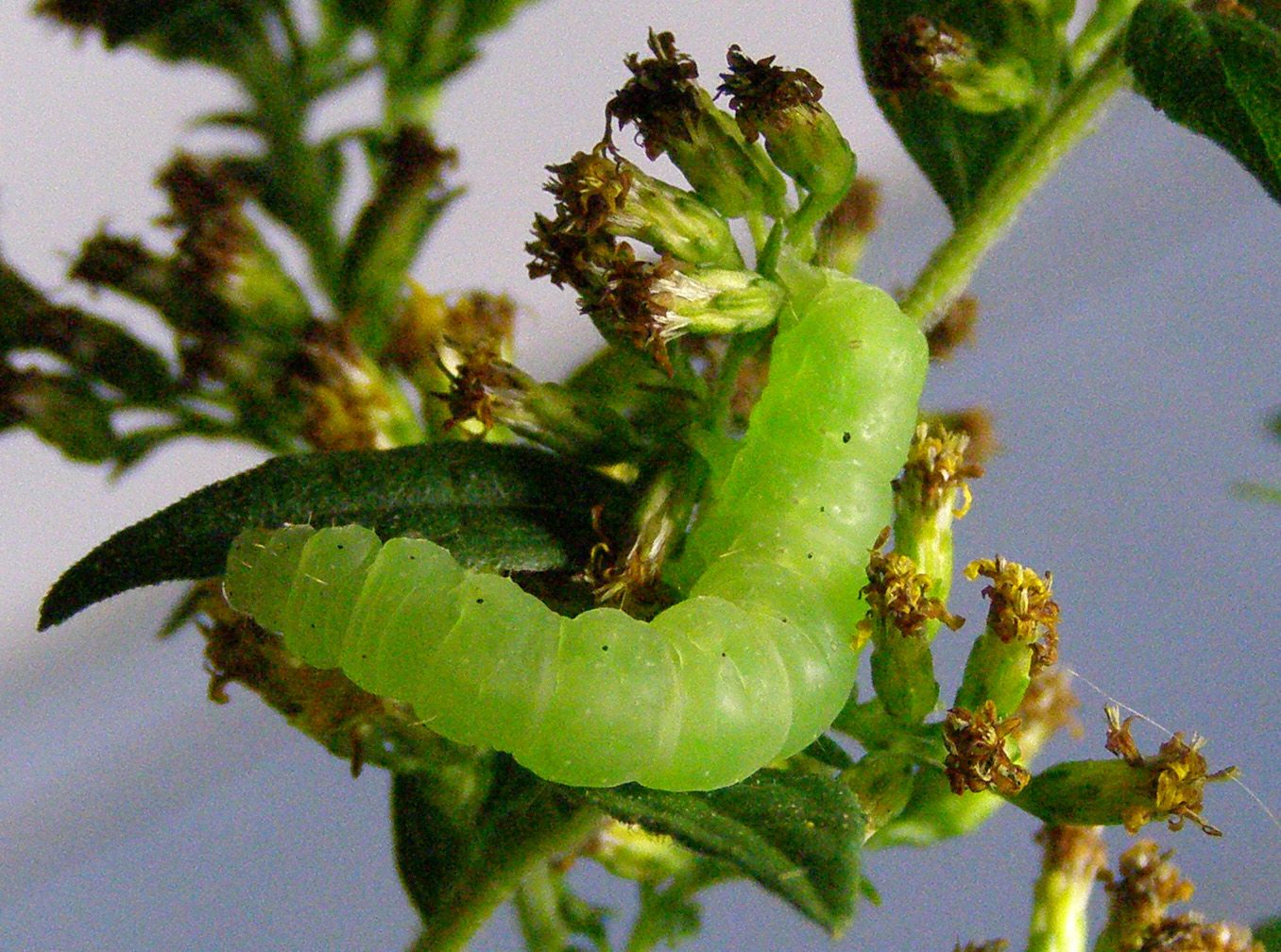Just barely a month ago I had a colony of slave making Formica pergandei raid a colony of either Formica pallidefulva, or F. incerta. I haven't studied up on either enough to tell them apart. Well the slave makers about a week later left the nest bare. They'd packed up all the slaves, all the brood, and all their colony members. I'm uncertain if this was a raiding party or the whole colony of F. pergandei. But anyhow you can read about that exploit here and see videos of them in the last third of Ant Chat Episode 22 (also available ad-free on iTunes).
Well to my surprise I went back to where the colony was and found another colony of Formica pallidefulva or incerta has moved on in.
That didn't take long, and without a slave maker to be seen. I've found this species normally has multiple queens and colonies divide and combine as needed over the year. Over the summer months they stay separated more while resources are low, but now that I think about it this is also the time when slave making Formica (and Polyergus) start their raids on Formic colonies. It's almost as though the Formica host species have evolved a tactic to hopefully avoid confrontation.
Presumably though they are able to maintain healthy colonies through effective foraging habits. Naturally the more food available, the more Formica colonies an area can handle. Here you can see not only has the colony moved in but they've caught a tasty worm.
Considering my native plant garden is loaded with caterpillars, the only thing really competing against the Formica colonies in the day (and Camponotus colonies at night) are wasps. Lots of pictures of caterpillars from my yard are featured here in an old post from last year, but here are some reposts from this year.
And for those of you up north, keep an eye out for this one on Milkweed plants. It's the caterpillar form to the Monarch Butterfly.
